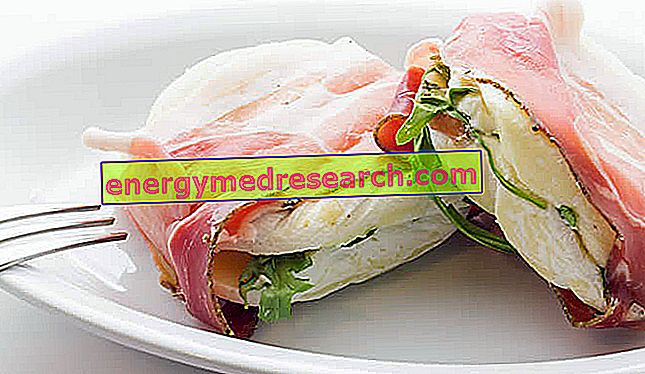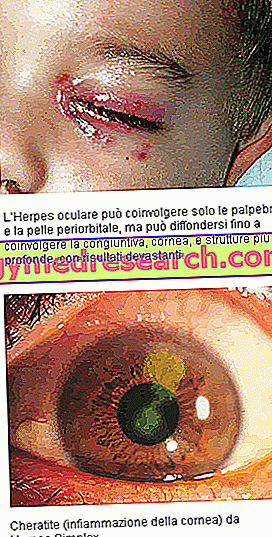Generality
Tomino (sometimes synonymous with "robiolino" or "goat's milk from cow's milk") is a typical northern Italian cheese, characteristic of the Piedmont region.
It is a product of animal origin that is part of the whole dairy, in turn contextualized in the II fundamental group of foods.
The dietary function of tomino and these foods is to supply proteins, fats, some vitamins and quite specific mineral salts.

To be honest, the name "tomino", rather than a specific cheese, refers to a heterogeneous group of foods characterized by a flattened, circular and small size.
Of tomini there are fresh, seasoned, oiled, spicy, etc. They can be soft, compact but without crust or with a flowery rind.
The most known tomino is the one with a flowered rind, therefore provided with a light surface coating induced by molds similar to those of the brie.
Nutritional Properties
WARNING! The following is the average of the calculated values for the tomino robiolino and the flowered rind.
Tomino produces on average 50-60% of water, 20-27% of fats, 15-20% of protein substances and 4-5% of mineral salts.
Tomino is a food that can be useful in the diet of the healthy subject and in normal weight, but it is not recommended in the diet of those suffering from overweight and / or metabolic alterations.
Tomino contains significant amounts of high biological value proteins, calcium, phosphorus, vitamin A, vitamin B2 (riboflavin) and vitamin B12 (cobalamin). These characteristics make it a useful product for feeding the growing subject and for those who want to prevent bone loss (osteoporosis in the elderly, especially in women entering menopause).
On the other hand, the high caloric density, provided mainly by lipids, excludes its frequent use and / or in significant portions for people who should reduce the caloric intake for slimming purposes.
The cholesterol level, as well as the percentage of saturated fats, is not negligible and makes tomino an unsuitable food for the diet against hypercholesterolemia.
Among other things, the tomino has discrete levels of sodium, an element that, if in excess, becomes unfavorable for the subjects affected (or at risk) of primary arterial hypertension.
Last but not least, the recommendation to avoid the intake of tomino with a flowering rind in case of pregnancy; the advice stems from the awareness that these products can be contaminated with Listeria monocytogenes, a microorganism harmful to the health of the fetus.
The average portion of tomino is about 70-80g for the one with flowered rind and 100-120 for the robiolino.
Characteristics of the Cheese
Tomini are cheeses made from cow or mixed milk; some types are in fact produced thanks to the mixture of cow, sheep and goat.
Tomini are usually obtained by slow rennet coagulation (ie thanks to the use of rennet) or rennet acid (rennet and lactic acid of microorganisms); an equally lasting purge follows.
The shape is always small, cylindrical or prismatic; however, by virtue of the considerable heterogeneity that characterizes these cheeses, it is not possible to create a single description that applies to all tomini.
From the product point of view, the tomino "robiolino" (fresh cheese, sometimes soft) should have the following chemical characteristics:
| Chemical composition for 100g of Tomino Robiolino | ||
Element | Quantity | |
water | 60g | |
Lactose | 2g | |
Fat as it is | 20g | |
Total proteins | 14, 7g | |
Mineral salts | 2.5g | |
Dry substance | 40g | |
Fat on the dry substance | 50g | |
Power | 247kcal | |
Protein | Whey | 0.5g |
Casein | 14, 2g | |
Mineral salts | Football | 400mg |
Phosphorus | 300mg | |
Sodium chloride | 1000mg | |
Indexes and reports | Maturity method index | 10 |
Index method of lipolysis | 2 | |
Fat / protein ratio | 1.37 | |
The tomino "robiolino" has no crust, has a soft texture and, depending on the specific type, sometimes has a spreadable consistency. It needs to be stored at low temperatures and, like other fresh cheeses, in the refrigerator it can reach a shelf-life limited to a few days. However, hermetically sealed in plastic bags with government liquid, some tomini reach a conservation time of 10-15 days. A longer duration can be obtained by means of other treatments (thermal heat or oil).
Even the tomino with a flowery rind has a soft and fluffy internal texture, yet enclosed by a thin white shell; the latter is appropriately colonized by a mycelial fungal microflora, with soft, dry and powdery spores. It ripens for about 15-30 days, never more than 45 days. Storage is longer than 15 days but does not require any sealing. In fact, the tomino with a flowered rind (as well as the brie), has no governing liquid and needs to "breathe", since conservation is guaranteed by the molds that cover it. However, as the duration increases, there is a reduction in the water content of the cheese.
Tomino "robiolino" can be eaten fresh in salads, or cooked in first course sauces, stuffed pasta fillings and on toasted bread. The tomino with a flowered rind can be eaten raw, sometimes with liquid honey and / or dried fruit (such as walnuts), or cooked on the grill or on the plate in combination with cold cuts such as speck; the tomini lend themselves to accompaniment with light white or rosé wines.



